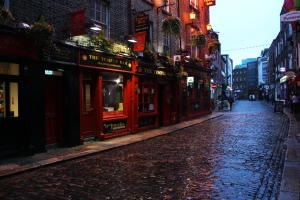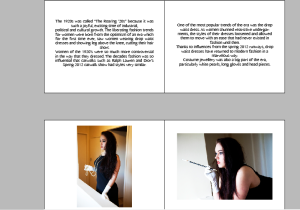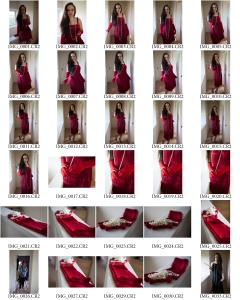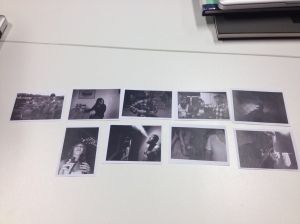We started the lecture by firstly looking at the aura of artwork, the authenticity of artwork, the digital replicant and how replica’s are not always as good as the original.
We looked at certain parts of an essay by Walter Benjamin on ‘Art in the Age of Mechanical Reproduction’
In the essay Benjamin starts by talking about how works of art have always been reproducible although replicas have been made often they are often by skilled men. Another point mentioned is that photography has almost acted as a catalyst for reproduction and he also talks about replica’s not having the aura of the original. No matter how good that replica may be it will never have the aura of the original. We can think of aura in relation to art by thinking in terms of natural aura and experience. The image or object that you replicate will never be the same as the original no matter how convincing the replica is because you will not have the same aura. He also mentions that the uniqueness of a work of art is inseparable from it’s being embedded in tradition.
Benjamin also mentions in his text that he doesn’t consider a photograph as an original artefact either. To us that first image taken is the original but in fact what I think Benjamin is trying to say is that the moment you see the thing you are trying to depict is the original moment and even by looking at the original print you may not be able to grasp the aura of the image because even though it is an original in a sense it is still a 2d piece of paper.
The aura has disappeared in the modern age because art has become reproducible. Think of the way a work of classic literature can be bought cheaply in paperback, or a painting bought as a poster. Think also of newer forms of art, such as TV shows and adverts. Then compare these to the experience of staring at an original work of art in a gallery, or visiting a unique historic building. This is the difference Benjamin is trying to capture. – Andrew Robinson (Ceasefire)
The Artefact ” An object made by a human being, typically one of the cultural or historical interest”
Can a photograph be an original?
Many believe that photographs weren’t a work of art because it wasn’t original. They believe we are simply placing our window around something that already exists.
Although Benjamin has many positive points and negative points about the mechanical reproduction the text was written between 1938-1940 which begs the question how does this relate to the digital age? At the point of writing the text Benjamin was not in the digital age that we are now and we no longer have information presented in this manor anymore. Does this mean that the digital age has accelerated Benjamin’s argument and that there may be even more less of an aura now?
I think the that Benjamin is stating is important, the aura of an image is extremely important and I do agree with the question “has the digital age accelerated the lack of aura in images”. I think this topic links really well with the previous lecture on Amateur Vs Professional in which we looked at Erik Kessels. Kessels created a project in which he printed out every image that had been uploaded to flickr over 24 hours and piled them into several different rooms.
The outcome of the project was astonishing and I think this links really well to what Walter Benjamin is trying to say in his essay about how a photograph might not even be original or a piece of art work. The pure scale of the photographs in which Kessel’s printed shows us that many people do not think about the aura of their photographs in the digital age. They don’t think about the originality of their photograph or if it’s been done before and the fact that photographs are so easily accessible now does make one think if a photograph can even be original like they maybe once were.
Dependent on the subject, photographer and the way in which the photographer has chosen to portray his or her’s subject, a photograph ( for me ) can still be a piece of art work. There will always those who disagree with this idea however this just shows the importance of the two horizons. The readers horizon and the photographers horizon, one may see or sense the aura/ originality in the photograph however another may not and I think that this will be an on- going debate for a long time.
We looked at the subject of provenance and permanence when talking about photographing a red rose. If someone important gifted you with the rose then it had sentimental value and provenance. However If you then took a photograph of that rose and only printed one copy of that perfect picture then the picture then it would have permanence. Even though the rose may die we will always have that permanent photograph of the rose.
Next we looked at a Blog Post by Kevin Kelly called better than free in which he mentions the fact that internet is a copy machine, and how these aspects of a photograph that can’t be replicated.
Immediacy
Personalisation
Interpretation
Authenticity
Accessibility
Embodiment
Patronage
Find-ability
The internet is a copy machine. At its most foundational level, it copies every action, every character, every thought we make while we ride upon it. In order to send a message from one corner of the internet to another, the protocols of communication demand that the whole message be copied along the way several times.
– Kevin Kelly.
We focused on just one of the aspects of which Kelly listed and that was Embodiment.
‘Embodiment’- a tangible or visible form of an idea, quality, or feeling.
Kelly also mentions that the pair for physical object is sometimes better than the free digital copy in which you can get online.
As digital natives we don’t always think about the benefits of these physical artefacts. An example of this and proof of how digital orientated we are in this age that the project Via PanAm by Kadir Van Lohuizen which was made into a digital book before a physical. This is strange for us, as we usually think that the physical book comes first however I think this is brilliant representation of how much some of us are becoming digital natives.
As digital natives the stereotype is that we no longer ( as human beings) want to meet each other but instead we’d rather talk online. However a show that happened in New York proves this stereotype wrong. A group of what seems to be mainly young adults met together to watch a photo presentation which they could easily have watched online.
I know personally that I still go to galleries and so whats stopping others to going to galleries because there is no digital experience that can be on par with seeing the original print in a gallery.
A physical object occupies physical space. Often in the digital age we look at it’s flaws. It is bulky, it is expensive, it takes time to produce and money to distribute, it only performs one function and cannot be updated. We considered why a cheaper, more dynamic and easily distributed project has been translated into a cumbersome and expensive book, bound to the page’s strict format.
Physical artefacts also break the flow of using the digital. When looking through a physical book or visiting a gallery we slow down and actually focus on what we may be looking for or enjoy the moment more so than when flicking through a webpage. We can often spend more time looking through the physical than what we do online.
We as digital natives are used to publishing things online everyday, wether it be Facebook or Twitter, etc. It’s free, easy and quick and in many ways we don’t really have to think too much into it.
As photographers its our job to decide how to present our work but also as readers its our decision in which we choose to view others work. It may be easier to view an image online but do we really get the same experience with the digital that we can with the original?
I think for me that a physical photo book or gallery is a much better way of displaying your work however I do think this still depends on the audience of your work or the meaning behind it. If the digital copy is more appropriate for your target audience then I can also understand why this is more appropriate.





















